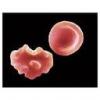Leaderboard
-
in all areas
- All areas
- Records
- Record Comments
- Record Reviews
- Jobs
- Jobs Comments
- Jobs Reviews
- Questions
- Question Comments
- Question Reviews
- Links
- Links Comments
- Files
- File Comments
- File Reviews
- Images
- Image Comments
- Albums
- Album Comments
- Records
- Record Comments
- Events
- Event Comments
- Blog Entries
- Blog Comments
- Topics
- Posts
- Status Updates
- Status Replies
-
Custom Date
-
All time
June 28 2007 - April 25 2024
-
Year
April 25 2023 - April 25 2024
-
Month
March 25 2024 - April 25 2024
-
Week
April 18 2024 - April 25 2024
-
Today
April 25 2024
-
Custom Date
01/12/2018 - 01/12/2018
-
All time
Popular Content
Showing content with the highest reputation on 01/12/2018 in all areas
-

PREPARING SCREENING CELLS
exlimey and one other reacted to Baby Banker for a topic
The Technical Manual used to have a list of antigens that must be represented in screening cells. I haven't checked the newest edition. I circle the required antigens at the top of a panel antigen profile, and then circle the cell number of each cell selected for the screen on the left of the profile. Remember to take zygosity into count. It almost always requires more than three cells. I usually do this when a patient has a known antibody. I omit that specificity, and what I am left with is a screen/short panel that will only be positive if the patient has developed a new antibody.2 points -
Or you can just eyeball it! Scott2 points
-
I think you're joking, but just in case...... It's a simple C1 x V1 = C2 x V2 calculation. One of the few times when algebra gets applied outside of high school. To do this accurately, you must first know the hematocrit (concentration) of your "packed cells" - this will be used as C2. For this example, let's say the hct is 75%. C1 = desired hematocrit (concentration) - 3%; V1 = desired volume - for this example, let's say we want 100 mL of 3% cells. Using the formula and information above.... 3 x 100 = 75 x V2, which resolves to 3 x 100 ÷ 75 = 4 mL. Ergo: 4 mL of "packed cells" in 100 ml pf PBS will yield ~3% suspension. This process works for low cell concentrations where the added RBC volume is only a small portion of the whole (4 mL added to 100 mL). If you try to make higher concentrations, you have to take the RBC volume into consideration as part of the whole volume.☺2 points
-
Very, very, very short term only. A day after the test, most of it went from my brain directly back into that book. LOL.2 points
-

Detecting ABO incompatibility with Validated Computer System
BloodBanker80 and one other reacted to Mabel Adams for a topic
As stated above, we use IS XM for ABO compatibility check only when the computer is down. We have passed several TJC and AABB inspections since starting this. Here is a quote from my crossmatch procedure: Whereas: Sensitivity: Immediate Spin crossmatch will not detect 100% of ABO incompatible units due to low titer of antibodies or weak expression of the antigens. Specificity: Immediate Spin crossmatch gives some false positive results (cold agglutinins, rouleaux etc.). Cold antibodies can cause false positives with immediate spin crossmatches, presenting a quandary on how to manage a unit that is incompatible at IS and compatible at AHG. Warming the sample to avoid the cold antibody might reduce the reactivity of the ABO antibodies as well. This false positive could happen even with an O unit when ABO incompatibility is not even possible. The BBIS contains algorithms that verify the ABO compatibility of all products selected and our validation shows this to have 100% sensitivity for detecting ABO incompatible units and 100% specificity for avoiding false positive results—both an improvement over immediate spin testing.2 points -
1 point
-
1 point
-

PIPETTE CALIBRATION
AMcCord reacted to David Saikin for a topic
If you get a certificate of calibration there is no need to confirm.1 point -

PREPARING SCREENING CELLS
Ensis01 reacted to David Saikin for a topic
I would look for R1R1, R2R2, and rr cells. The ones selected should allow for homozygosity of Fy, Jk, MNSs systems (not in each cell but, just like screening cells, you will want homozygous expressions in those ag systems). Make sense?1 point -

To BB (ASCP) or Not
new2BB reacted to Malcolm Needs for a topic
Good Lord! Is this possible for anyone?????????!!!!!!!!!!!!!!!!!1 point -

BloodBankTalk: Clinical Aspects of Transfusion Reactions
Malcolm Needs reacted to tbostock for a topic
I just answered this question. My Score PASS1 point -
Do you mean, like: how much packed RBCs do you add to how much saline to get a 3% suspension? (I am determined to find the question to this answer) Scott1 point
-

ABO incompatibility
Yanxia reacted to Malcolm Needs for a topic
It is because serum would have Ca++, Mg++ and Mn++ ions present (needed to activate the classical complement pathway beyond initiation), whereas EDTA will, in effect, remove these ions from plasma by chelation. An ABO mis-match is far "easier" to detect using serum than plasma, and may even lead to haemolysis of the test cells, however, in both cases, IF the plasma of the proposed recipient has high levels of Type 1 ABO antigen (the ABO substance that is soluble in the plasma/serum - in other words the proposed recipient is a "strong secretor"), there is a slight danger, albeit slight, that this ABO substance may inhibit the reagent anti-A and/or anti-B, causing false negative results.1 point -

FDA Reportable Events
Eman reacted to pinktoptube for a topic
I believe it would need to be reported. The unit was issued with an error. It also doesn't hurt to just submit it since the FDA will let you know if it didn't need to be reported.1 point -
No, I was considering putting the indicators on the products in surgery coolers, but wasn't sure if it was going to be a problem with nursing staff touching them, if only the indicators came with a little camera1 point
-
Depends on the inspector! Back in the day when I was inspecting, and yes it was called inspecting back then, I would not have even given it a second thought as long as the sample was acceptable and the unit was issued and hung prior to the expiration of the sample. I have met those inspectors who would have been quite distraught over such a perceived infraction. The best advice I can give you Mabel is, let your conscience and best judgement be your guide.1 point
-
This depends where you are located......Try removing IS in NJ? You will not pass your inspection1 point
-
PIPETTE CALIBRATION
David Saikin reacted to carol1 for a topic
We also use the gravimetric method. We have never had a problem with state or CAP inspections either.1 point -
I question what we do at our facility. We send out pipettes for calibration and then have to recheck them once they come back. We don't use as many points to check as they do to calibrate. The recheck doesn't seem necessary.0 points




